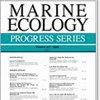Thermal priming of Saccharina latissima: a promising strategy to improve seaweed production and restoration in future climates
IF 2.1
3区 环境科学与生态学
Q2 ECOLOGY
引用次数: 0
Abstract
ABSTRACT: Saccharina latissima is a brown algal kelp species of ecological and economic importance. As the rise in sea surface temperature will threaten not only wild populations of S. latissima but also the productivity of kelp farms, crop enhancement techniques will become crucial to mitigate this threat. Priming is a common strategy in crop plants, in which seeds are pre-exposed to moderate stress to improve the performance and tolerance of plants when exposed to harsher conditions. We investigated the potential of thermal priming to improve growth and tolerance of S. latissima. Kelp gametophytes primed at 20°C for 2, 4 and 6 wk and then re-transferred to 5°C were compared to a naïve treatment maintained at 5°C. Gametophyte priming increased growth of subsequently formed sporophytes by up to 30% (for 4 wk priming) compared to the naïve treatment. Female gametophyte growth in the priming environment was positively correlated to offspring sporophyte growth, indicating a maternal effect. Sporophytes were exposed to heat stress of 20°, 22°, 23° and 24°C for 2 wk. Sporophytes from 4 and 6 wk primed gametophytes exhibited 11 d longer tolerance at 22°C, 7 d longer tolerance at 23°C and 1°C higher thermal tolerance over 7 d compared to naïve sporophytes and sporophytes from 2 wk priming. A priming time of 4 wk was optimal for both sporophyte growth and thermal tolerance. Our results suggest that priming is a promising crop enhancement technique that could improve yield for seaweed farmers and restoration of kelp forests threatened by warming climates.Saccharina latissima 的热启动:在未来气候条件下改善海藻生产和恢复的可行战略
摘要:Saccharina latissima 是一种具有重要生态和经济价值的褐藻海带物种。由于海面温度的升高不仅会威胁到 S. latissima 的野生种群,也会威胁到海藻养殖场的生产力,因此,作物强化技术将成为缓解这一威胁的关键。催熟是作物植物的一种常见策略,即让种子预先承受适度的压力,以提高植物在更恶劣条件下的表现和耐受性。我们研究了热诱导改善 S. latissima 生长和耐受性的潜力。海带配子体在20°C下进行2、4和6周的预热,然后重新转移到5°C,并与在5°C下保持的原始处理进行比较。与原始处理相比,配子体启动可使随后形成的孢子体的生长速度提高 30%(启动 4 周)。雌配子体在初始化环境中的生长与后代孢子体的生长呈正相关,表明存在母性效应。孢子体在 20°、22°、23° 和 24°C 的热胁迫下暴露 2 周。与原始孢子体和引种2周的孢子体相比,引种4周和6周配子体的孢子体在22°C下的耐受时间延长了11天,在23°C下的耐受时间延长了7天,7天内的耐热性提高了1°C。启动时间为 4 周对孢子体的生长和耐热性都是最佳的。我们的研究结果表明,引种是一种很有前景的作物增产技术,可以提高海藻养殖户的产量,并恢复受气候变暖威胁的海藻林。
本文章由计算机程序翻译,如有差异,请以英文原文为准。
求助全文
约1分钟内获得全文
求助全文
来源期刊

Marine Ecology Progress Series
环境科学-海洋学
CiteScore
5.30
自引率
8.00%
发文量
238
审稿时长
3 months
期刊介绍:
The leading journal in its field, MEPS covers all aspects of marine ecology, fundamental and applied. Topics covered include microbiology, botany, zoology, ecosystem research, biological oceanography, ecological aspects of fisheries and aquaculture, pollution, environmental protection, conservation, and resource management.
 求助内容:
求助内容: 应助结果提醒方式:
应助结果提醒方式:


